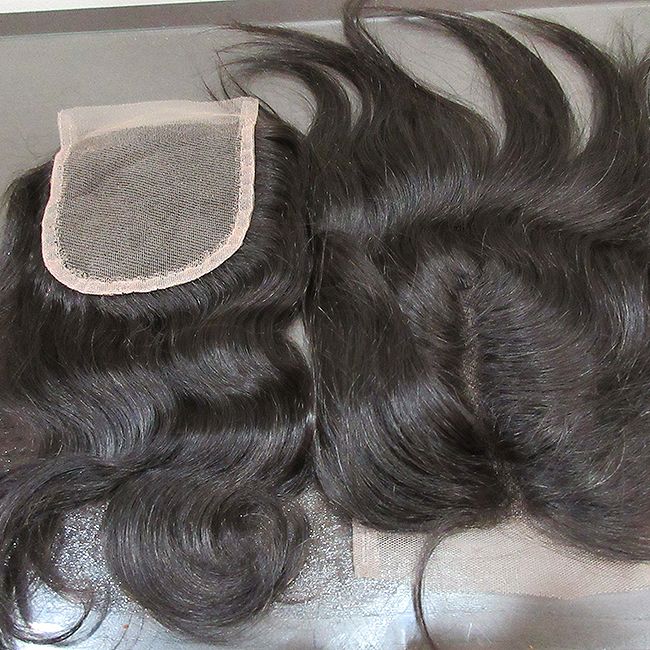
What is a closure?
A closure is a small hairpiece or top unit that you can purchase ready to wear or customize. Closures can be anchored on to the skin using liquid adhesive or double-sided tape for people with hair loss. They can also be attached to hair using clips or sewn onto cornrows. Other weaving techniques such as fusion, bonding, or micro links can be used to hold closures on to the hair as well.
What are the benefits of using a closure?
Using closures while wearing extensions gives you the option of installing hair that is a different texture or color from your natural hair. It will prevent heat damage you can get from flat ironing too often to blend it in with the extensions. You can try a new haircut or style without having to make extreme changes to your natural hair, because all your hair is protected and cornrowed underneath the install.
You can decide what closure to use based on the base material, which is what the hair on the unit is attached to. The most popular base materials to choose from are lace and silk.
Lace Closures
Lace is the most popular base material used for closures. Because the base of the unit is thin, it lays flat against the head giving your extensions a more realistic look. Because the lace is nude mesh, the color of your scalp peeks through to give the illusion of a natural part. Lace closures are available in different colors, which can help match the skin on your scalp.
There are two common types of lace closures.
- French lace closure- is a thin, closely woven together piece of lace. It is durable, but also more noticeable than Swiss lace closures.
- Swiss lace closure– looks more realistic than French lace, because the lace is thinner, but Swiss lace closures are delicate and easy to tear.
A disadvantage to lace closures is the alterations needed to conceal the way the hairs on the unit are attached to the lace. The hair is anchored on the lace with knots that you can see on the top of the unit. The knots create a grid-like appearance on the lace, making your extensions appear less natural.
To make the unit look more natural, you will have to bleach the knots of the lace closure to create a look as if the hair is growing out of the scalp. If you do not bleach the knots properly, you risk the chance of ruining your closure or the hair before you use it.
Silk Closures
With silk base closures the knots are not visible, because the hair is attached to a silk material that has a nude color resembling skin. When you look at the top of this unit, it will look like a natural part and you will not see a grid that is apparent with lace closures.
The silk material is supported with lace material. Silk closures are more durable than lace closures and can last longer depending on what type of hair is used. You can pay more money for a silk-based closure, but if the quality of the hair is poor, your silk-based closure will have shorter use to you.
One disadvantage of using the silk based closure is that the base is a little thicker, so it will not lay as flat on your head as a lace based closure. Because the color of the silk material is nude, it may not look as natural on darker scalps, so you may have to alter the closure after all.
Have you tried using a silk based or lace-based closure? What was your experience?

